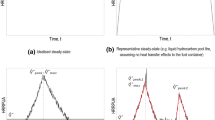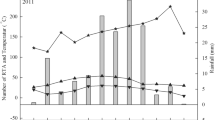Abstract
Fire is a major danger in the large stadium due to fire accompanied with smoke flow and evacuation path. As a part of an effort to improve the life safety in large stadium, the simulation technology combined with fire spread and evacuation had been developed. Besides that, in order to decrease the rate of people death in the large stadium fire, the interface between fire and the evacuation people must be designed according to simulation results, based on the influence laws to human behavior by smoke temperature, CO concentration and extinction coefficient in fire condition. Therefore, the investigation of effect of fire spread on life safety is needed. In this paper, the dynamic changes of walking speed, route choice and mental state is obtained from automatic reading of fire data during the simulation of evacuation. The effect abruptly changes due to time-varying fire smoke parameters, especially local jamming and uneven efficiency of routes. From the simulation, the visual and tried evidences would be provided for safe evacuation in fire emergency in large stadiums.








Similar content being viewed by others
References
Blue VJ, Adler JL (2001) Using cellular automata micro-simulation to model pedestrian walkways. Transport Res Part B 35(3):293–312
Byran JL (1999) Human behavior in fire: the development and maturity of a scholarly study area. Fire Mater 23(5):249–253
Chen T (2004) Model and application study during fire evacuation. Ph.D. thesis. University of Science and Technology, Hefei (in Chinese)
Fruin JJ (1971) Designing for Pedestrians: A Level-of-Service Concept. HRB 308:1–15
Gwynne S, Galea ER, Hickson J (2003) The collection and analysis of pre-evacuation times derived from evacuation trials and their application to evacuation modelling. Fire Technol 39(2):173–195
Jin T, Yamada T (1985) Irritating effects of fire smoke on visibility. Fire Sci Technol 5(1):1–12
Lo SM, Fang Z, Lin P et al. (2004) An evacuation model: the SGEM package. Fire Saf J 39(3):169–190
Milke JA (2000) Evaluating the early development of smoke hazard from fires in large spaces. ASHRAE Trans 106(1):627–636
Purser DA, Bensilum M (2001) Quantification of behavior for engineering design standards and escape time calculations. Saf Sci 38(2):157–182
Shields TJ, Boyce KE (2000) A study of evacuation from large retail stores. Fire Saf J 35(1):25–49
Sutula J (2002) Applications of the fire dynamics simulator in fire protection engineering consulting. Fire Prot Eng 14:33–41
The Scottish Office (1997) Guide to Safety at Sports Grounds, 4th edn. The Stationery Office, Norwich
Wang W, Zhang H, Wan Y (2006) Application of CFD software to performance-based fire design, In: 3rd engineering computational fluid dynamics conference, Harbin, China, pp 65–73 (in Chinese)
Acknowledgment
This research was supported by Beijing New Star Program (No.2007-B-41).
Author information
Authors and Affiliations
Corresponding author
Rights and permissions
About this article
Cite this article
Wei, Z., Hui, D. & Tong, W. The application of fire spread and evacuation simulation technology in large stadium. Stoch Environ Res Risk Assess 23, 433–439 (2009). https://doi.org/10.1007/s00477-008-0239-1
Published:
Issue Date:
DOI: https://doi.org/10.1007/s00477-008-0239-1




